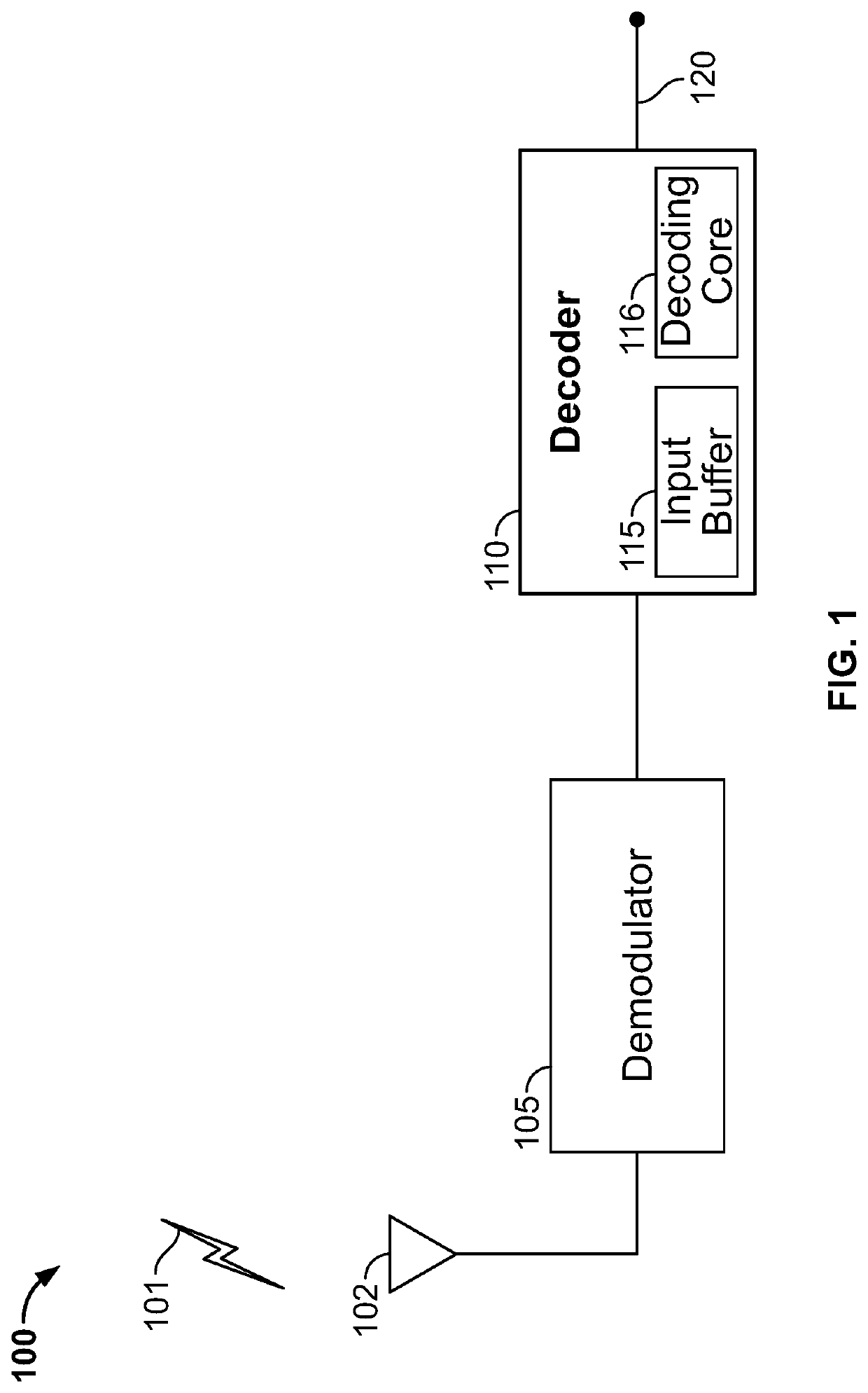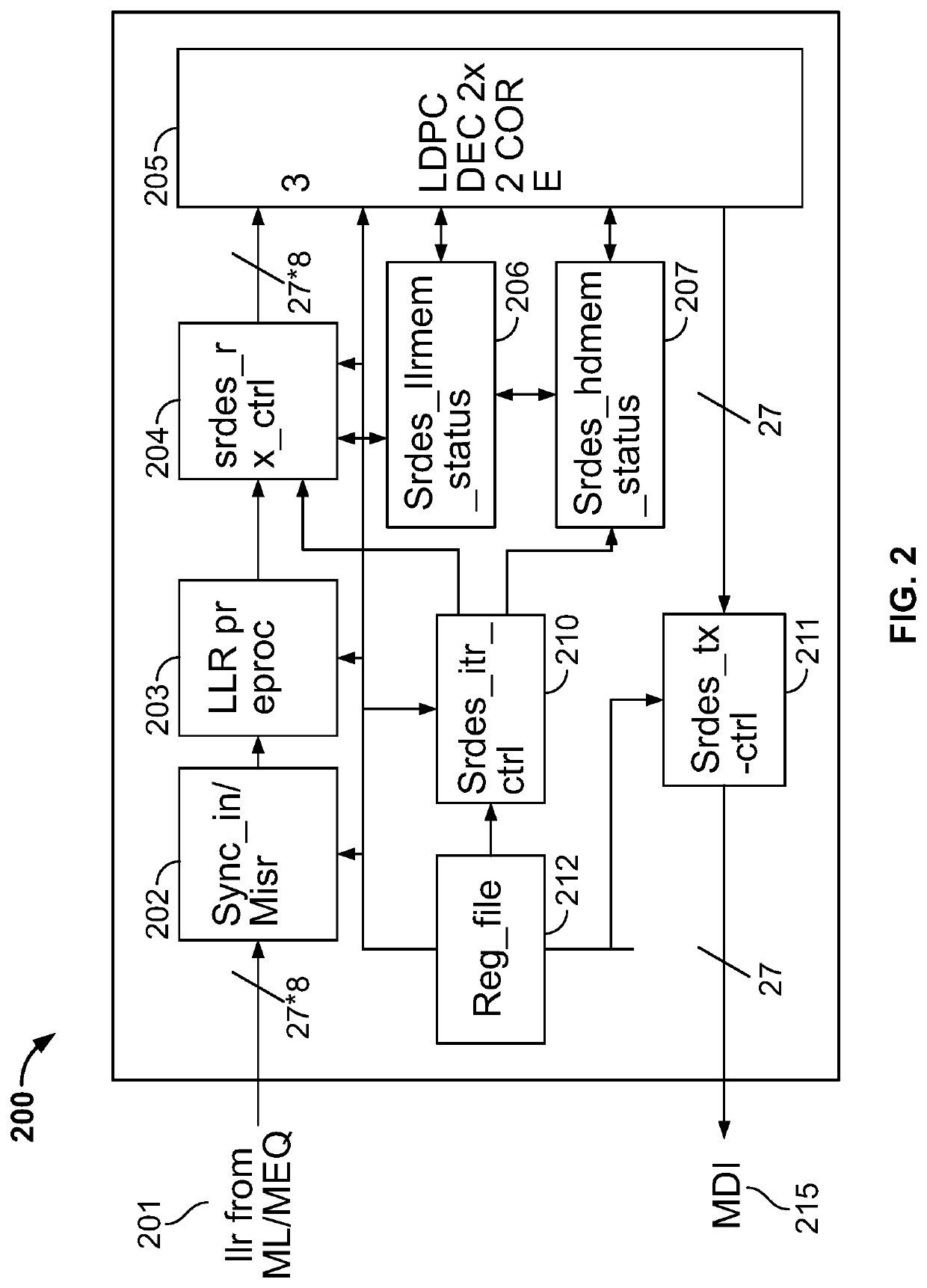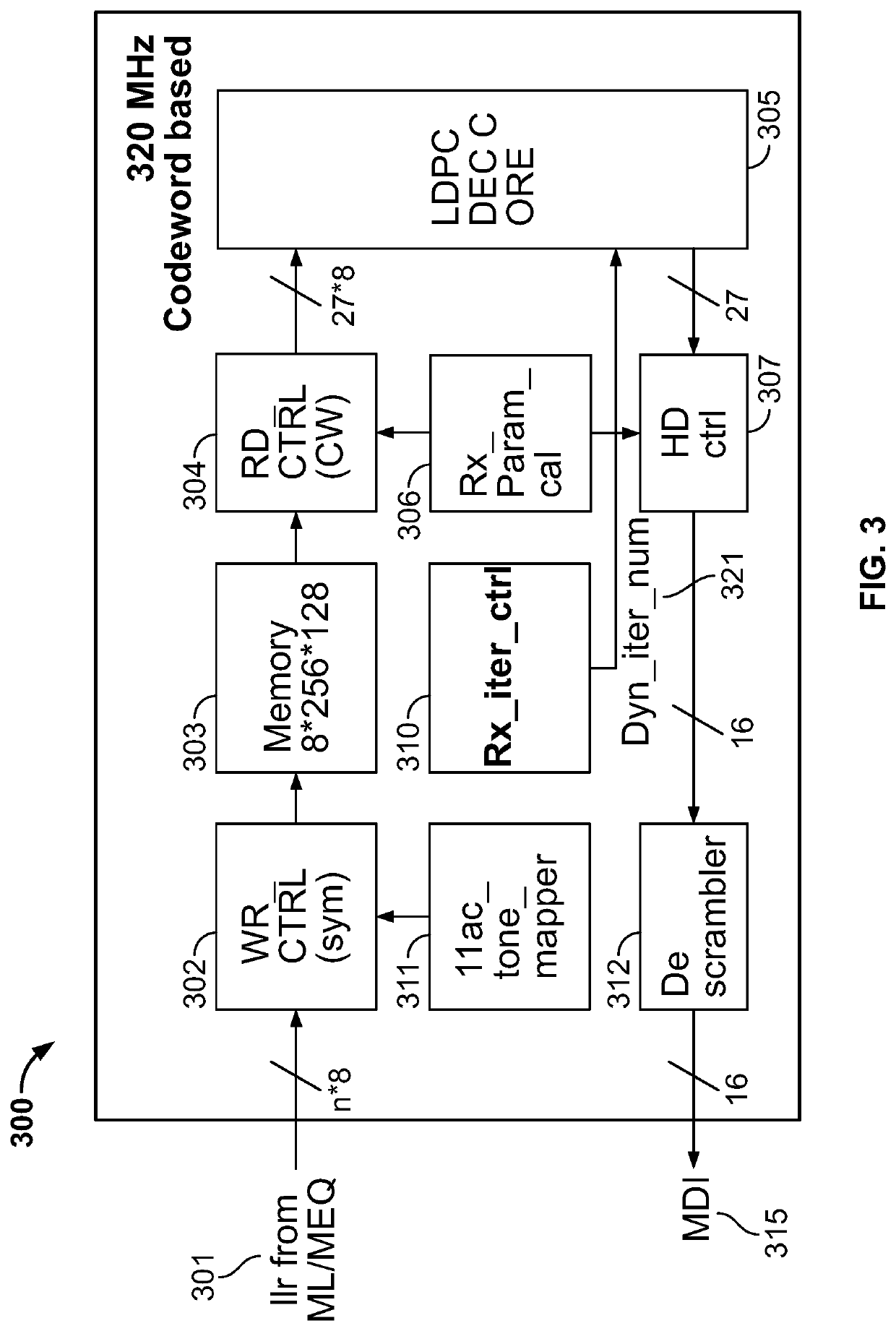Systems and methods for dynamic iteration control in a low-density parity-check (LDPC) decoder
a low-density parity-check and decoder technology, applied in the field of decoding schemes in wireless data transmission systems, can solve the problems of inefficient use of the same number of iterations for all received cws, inefficient use of high-noise corrupted cws, and limited decoding time for a codeword (cw) or a data pack
- Summary
- Abstract
- Description
- Claims
- Application Information
AI Technical Summary
Benefits of technology
Problems solved by technology
Method used
Image
Examples
Embodiment Construction
[0022]This disclosure describes methods and systems for dynamic iteration control for an LDPC decoder. According to this disclosure, the maximum iteration number or limit of the iterative decoding scheme to decode an LDPC CW received at a wireless receiver can be dynamically configured and adjusted, based on monitoring the available input buffer space, and / or the available decoding time. For example, instead of using a fixed number of iterations to decode all incoming data packets or all data symbols received in a data packet, the decoder at the wireless receiver may reduce the iterations when the input buffer is near full, or the available decoding time is limited (e.g., when the decoding has taken a time period close to the GI); or the decoder may allow more iterations to improve decoding accuracy when the input buffer has sufficient space to receive incoming data traffic, or the remaining available decoding time is sufficient. In this way, the iteration limit can be dynamically d...
PUM
 Login to View More
Login to View More Abstract
Description
Claims
Application Information
 Login to View More
Login to View More - R&D
- Intellectual Property
- Life Sciences
- Materials
- Tech Scout
- Unparalleled Data Quality
- Higher Quality Content
- 60% Fewer Hallucinations
Browse by: Latest US Patents, China's latest patents, Technical Efficacy Thesaurus, Application Domain, Technology Topic, Popular Technical Reports.
© 2025 PatSnap. All rights reserved.Legal|Privacy policy|Modern Slavery Act Transparency Statement|Sitemap|About US| Contact US: help@patsnap.com



